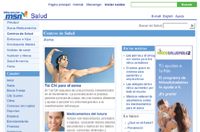Alternative Media: Pharma Online: Not Just Black and White
To avoid the extra expense, many pharmaceutical companies abandon their Spanish sites when a new general-market campaign is launched.
Multicultural marketing represents a huge opportunity for pharma companies to go after a largely untapped audience. African-American and Hispanic spending power in 2005 was an estimated $761 billion and $736 billion, respectively, according to the Selig Center of Economic Growth. And it's only going to increase.

Debrianna Obara
Despite their buying power, pharma companies are under-investing in promoting to African Americans, Hispanics, and Asians—a void that is only further magnified when applied to the online world.
Many believe that minorities are not Internet users. But that's simply not true. Nielsen Net Ratings reports that there are 7 million African-American, 6.5 million Hispanic, and 3.1 million Asian users. While most pharma companies fail to grasp these growing statistics, a few are at least attempting to create online campaigns focused on these audiences. This column takes a hard look at those efforts, and offers advice for increased effectiveness.
Targeting Parent and Child
For its pediatric asthma treatment, Pulmicort Respules (budesonide), AstraZeneca developed EverydayKidz.com and NiñosSaludablez.com. These compliance and loyalty sites feature tools that help parents learn about and manage their child's asthma, including videos for both moms and kids, and an asthma "action plan" for better health. EverydayKidz.com is directed to the general market (including African Americans and English-speaking Hispanics, which represent a significant portion of the patient population), while NiñosSaludablez.com offers the information in Spanish.

Both sites offer parents a venue to explore asthma educational materials, and deliver easy-to-digest health information in an engaging and fun format. One highlight is the animated character "Pulmi," who struggles with asthma. Pulmi is a likable character that both parents and children can relate to as he learns to use his nebulizer, and avoid asthma triggers.
Inconsistent Representation
Pfizer has been at the forefront in creating campaigns targeted to diverse audiences. In an effort to reach African Americans, Pfizer sponsored the online educational content for diabetic nerve pain for the Black Entertainment Television/Healthology Web site. The video (produced by Healthology) features mostly white doctors, but has a variety of patients displayed—showcasing how the disease affects people of all races and ages.
A banner rotation at the bottom of the site claims Pfizer's sponsorship of the section, and drives users to its Web site for its diabetic-nerve-pain treatment, Lyrica (pregabalin). But for users coming from BET, the landing page isn't always culturally relevant. The site features rotating photography. And while some of the imagery includes black diabetes patients, they are not consistently featured across the landing pages. This lack of continuity is a misstep in terms of targeting, and giving users a truly integrated and culturally-relevant experience.
Lost in Translation
Pfizer's multicultural-marketing efforts miss the mark again in the company's online Viagra (sildenafil) campaign for Hispanics. Pfizer appears to have simply translated the general-market slogan, "Keep That Spark Alive," and placed it alongside the same Anglo man from the general-market Web site.

Dual Purpose: MSN Latino features English-language creative used to target bilingual Hispanics.
According to Lee Vann, president of Captura Group, a firm specializing in reaching Hispanics, the literal translation fails to account for cultural issues, such as stigma or "machismo," that may affect how Hispanic men perceive erectile dysfunction.
Pfizer did a better job adapting its Viagra brand to the Hispanic audience on the Web portal Terra.com, intended for Spanish-speaking Americans. The sponsored content on this site features imagery and information that better reflect the readers.
Eli Lilly is also guilty of the direct-translation approach, with the Spanish-language version of its Web site for depression drug Cymbalta (duloxetine). Although the company uses culturally relevant imagery on the site, the text on the Spanish version is an old iteration of the campaign, while the English site for Cymbalta has since been updated.
A final example of multicultural marketing comes from Ortho McNeil, which produced a stand-alone site, ElParche.com, targeted to Hispanics for its birth-control drug Ortho Evra (norlegstromin/ethinyl estradiol). This company should be commended for investing in establishing a truly targeted site, with a completely different navigation, design, and message than the general-market site. However, it stops short of addressing Hispanics' issues with birth control.
"Research has shown that barriers to birth control among Hispanics include language, embarrassment, and lack of knowledge of the system," says Vann. "ElParche.com is very product-driven and could have addressed these barriers through more prominent educational content about the safety and history of birth control. The idea is that before a Hispanic woman is comfortable with a birth-control patch, she needs to be comfortable with birth control in general."
Vann also points to ElParche.com's tagline: Sobre tu cuerpo. Fuera de tu mente. (On your body, off of your mind.) Again, the slogan is a literal translation from an old English version. "The tagline works well in English," says Vann, "but may not resonate with Hispanic women."
What Marketers Should Know
When marketing to diverse audiences, companies need to do more than just add a few photos of the target audience to a translated version of the general-market site. Language nuances and a strong commitment to respect should create the foundation for all multicultural campaigns.
To get there, companies should conduct focus groups and market research—and seek media partners that truly understand the subtleties of how to talk to this growing online audience.
English-language ads targeting bilingual Hispanics on sites such as Yahoo!, Telmundo, and MSN Latino also can be quite effective. In this way, pharma companies can target bilingual Hispanics online without necessarily investing in a separate Spanish-language banner campaign and Web site, although creating Web destinations in both languages is advisable.
A lot of brand managers abandon their Spanish sites when a new general-market campaign is launched, instead of incurring the additional expense to update their Spanish sites—examples include Celebrex (celecoxib) and Elidel (pimecrolimus). This lack of planning, budget, and foresight cuts to the heart of a community that often feels under-represented, ignored, and disrespected by big business.
Pharma marketers must face up to the true faces of their customers. Once the investment is made in properly targeting and educating these groups, pharma companies may be surprised at how loyal an audience they've created.
Debrianna Obara is vice president of media at Avenue A/Razorfish. She can be reached at debrianna.obara@avenuea-razorfish.com

The Misinformation Maze: Navigating Public Health in the Digital Age
March 11th 2025Jennifer Butler, chief commercial officer of Pleio, discusses misinformation's threat to public health, where patients are turning for trustworthy health information, the industry's pivot to peer-to-patient strategies to educate patients, and more.
Navigating Distrust: Pharma in the Age of Social Media
February 18th 2025Ian Baer, Founder and CEO of Sooth, discusses how the growing distrust in social media will impact industry marketing strategies and the relationships between pharmaceutical companies and the patients they aim to serve. He also explains dark social, how to combat misinformation, closing the trust gap, and more.